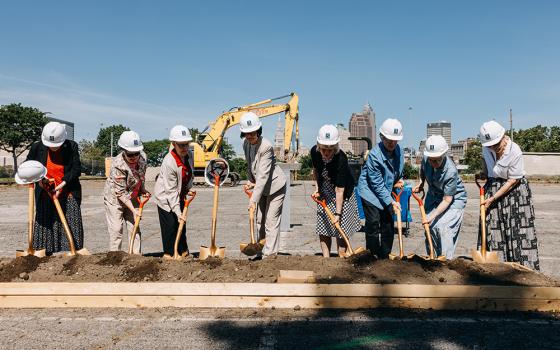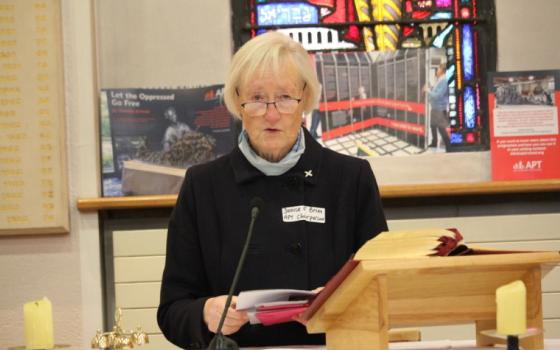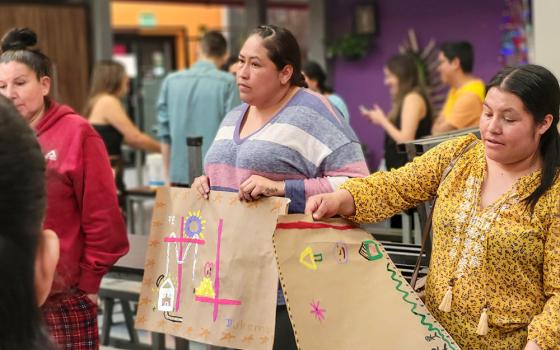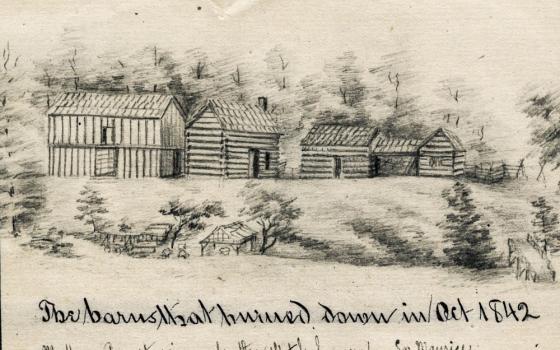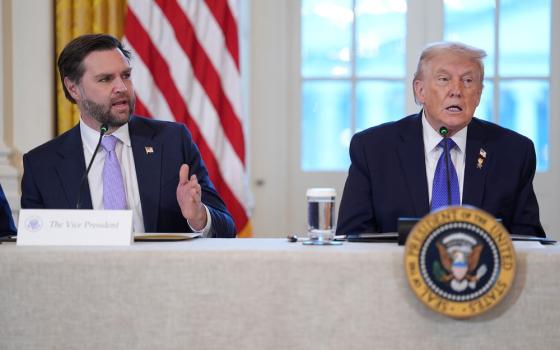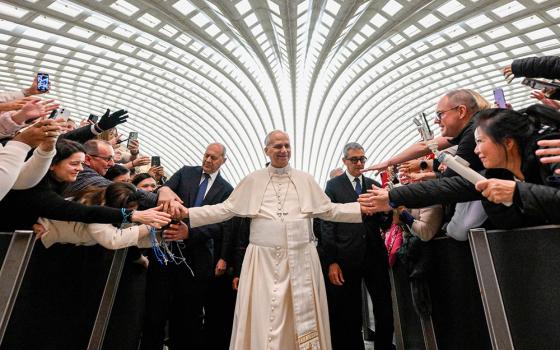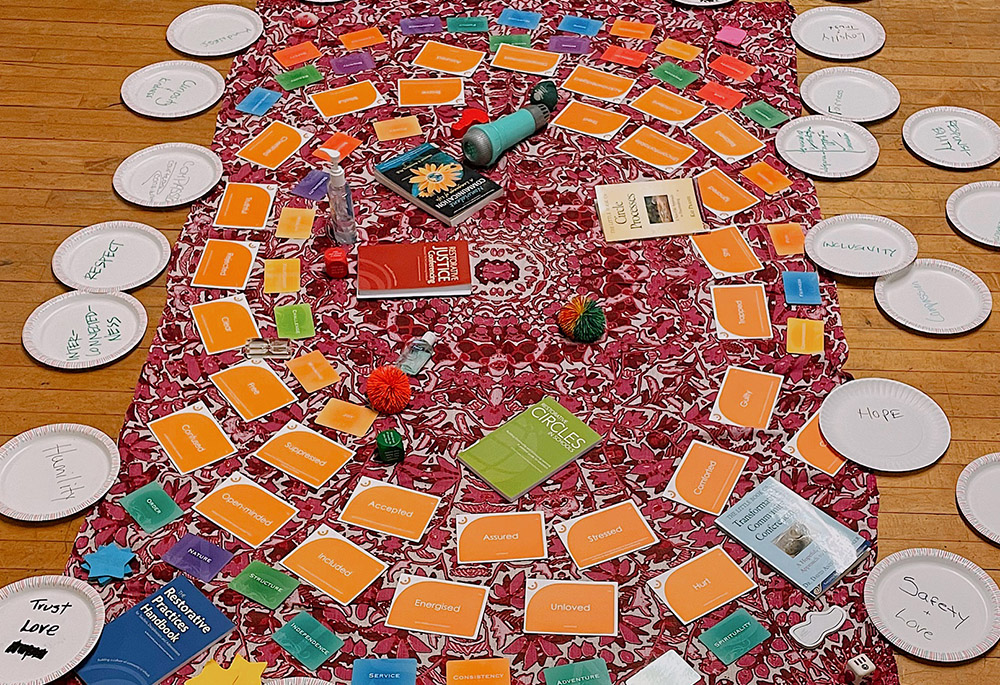
In every restorative justice training with the New York Peace Institute, they set this up in the center of our circle. It was filled with different reference books, feeling words, talking pieces, and group expectations we wrote on paper plates during the first training. (Courtesy of Caileigh Pattisall)
I've been passionate about justice work ever since I took my first criminal justice class in my junior year of high school. My teacher really stressed the structural issues across the justice system. I learned there were jobs within the criminal justice system other than police officer, lawyer, etc., and I wanted to learn more.
I decided to major in justice studies at James Madison University, a major with three tracks: criminal justice, global justice, and social justice, the one I chose. All of the tracks took the same beginning core classes as well as the same final two senior classes. The other electives and major specific classes were up to you and what you thought would be important to know for the field you hoped to go into.
The criminal justice students hoped to go into law, politics, or law enforcement. The global justice students hoped to go into diplomatic politics and homeland security. All important work on a broad spectrum, but none quite encapsulating what I wanted to do with my life.
The social justice track is "designed to investigate what is fair, equitable and just for society. Emphasizing the oppression and liberation of vulnerable, exploited and marginalized populations, this curriculum promotes sustainable and just solutions to social, political and economic problems."
Maybe this was because it was my own major, but I noticed that the jobs seemed broader with the social justice track. Social justice work can take so many forms: nonprofit managers, social workers, advocates, peace-builders, activists.
My favorite course at JMU was one of my last: restorative justice. Unfortunately, I began the class at the start of 2020, and we had to go virtual in March. But before that, in every class period, all the students sat in a large circle. We learned the traditional and restorative means of a circle process, which traditionally provides an opportunity for communities to come together and hold space to discuss something that has harmed them and what their needs are moving forward. Today, restorative justice can take the form of community-building, responsive conflict resolution in schools, victim-offender conferencing, and so much more.
I graduated in the spring of 2020, so opportunities to learn more about these topics that I was so passionate about were in short supply. I had always wanted to do a year of service, but amid a pandemic, I had no idea what that would look like.
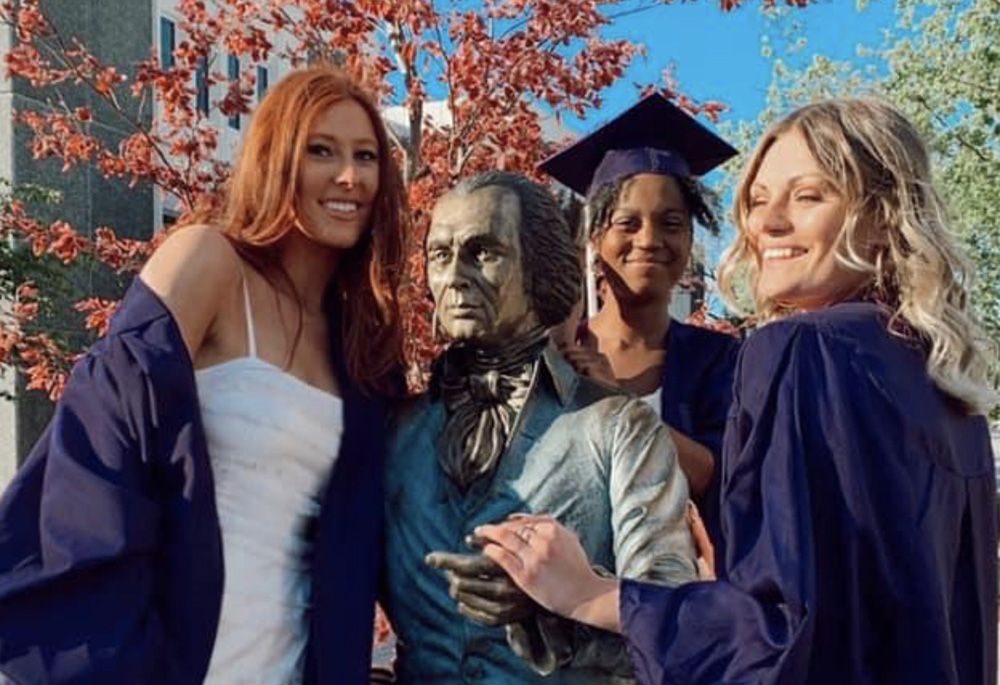
I loved my time in college, and I'm so grateful for my education. While the class of 2020 didn't get a proper graduation, my roommates and I had a great time celebrating our graduation in quarantine. This is a photo with my roommates and James Madison University's statue of James Madison. (Courtesy of Caileigh Pattisall)
I applied and was accepted by Good Shepherd Volunteers in the spring of 2021. I applied to the program originally because of my placement site, Rose House and Barbara Blum Residence. It was important to me to know what juvenile justice actually looked like before making further steps in my education.
The more I spoke with the program directors and past volunteers, the more I became excited about an intentional community and collectively growing as people in the social justice field. I now only have two more months of my position with Good Shepherd Volunteers, and it's been one of the best decisions I could have made.
This service year has been great for many reasons, but one of my favorites has been my access to training through Good Shepherd Services. I have trained in safety crisis management, the Missouri Approach and the Sanctuary Model, and so many more interesting topics.
Recently, the Good Shepherd Services office in East New York, near my job site, hosted the New York Peace Institute, which trained all of us in restorative justice. My time as a Good Shepherd Volunteer has come full circle (pun not intended) for me in many ways, but this has been one of the craziest.
For three Fridays in a row, 25 Good Shepherd Services staff members from various programs came together and sat in a circle to learn. I was finally able to complete a training I was passionate about while meeting people in programs different from my own. The New York Peace Institute is also a big name when it comes to mediation, so it was a great opportunity to network.
Advertisement
I now know the variety of work that goes into a single juvenile justice program, and there are a lot of moving parts. Youth development counselors spend most of their days with the youth, mentoring and encouraging them to do better for themselves. The recreation specialists do community outreach to bring in speakers and groups and find locations for trips. The case planner tirelessly maintains relationships with all of the families to ensure a seamless release. The education specialist has to keep up with education politics and legislation while also keeping track of all the available transfer and community schools across New York City. The social worker keeps track of all the youths' cases and holds therapy sessions for each youth every single week. The community success coaches find the youth jobs and extracurriculars upon their release and travel all across New York City every week to check in with them in their communities. These descriptions don't even encapsulate half the things these social justice workers do for these kids.
I have learned what many of these titles mean and what they look like on a day-to-day basis. I've gained insight on how intertwined the current political climate is to the youth I'm working with and how it affects their cases within the juvenile justice system.
There's something to be said for learning about the work directly from the people who have been here doing it. It's only right to bear witness to the issues and people you strive to advocate for, and that has been what this year is to me. We cannot read about or assume from statistics what problems individuals and families face. We must sit in community to gather understanding first. And these are the lessons I will carry with me as I begin to transition out of this role and find my own journey to justice.

